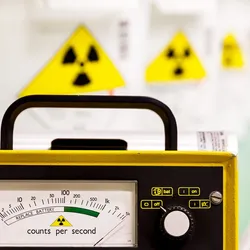
Trevor J Henderson
Laboratory Products Group Creative Services Director at Lab Manager
Trevor Henderson BSc (HK), MSc, PhD (c), has more than two decades of experience in the fields of scientific and technical writing, editing, and creative content creation. With academic training in the areas of human biology, physical anthropology, and community health, he has a broad skill set of both laboratory and analytical skills. Since 2013, he has been working with LabX Media Group developing content solutions that engage and inform scientists and laboratorians. He can be reached at thenderson@labmanager.com.
Education
University of Toronto
Doctor of Philosophy Ph.D.(c), Medical Anthropology
University of Toronto
Master of Science (MSc), Physical and Biological Anthropology
University of Guelph
B.Sc Human Kinetics
Articles by Trevor J Henderson

Electronic laboratory notebooks (ELNs), one component of a lab’s information infrastructure, help laboratories capture and manage knowledge, streamline data management, protect intellectual property and foster collaboration. Both non-specific/generic ELNs (which compete directly against paper notebooks) & application/task-specific ELNs exist, each with their own fans.

CO2 incubators are designed to copy a cell’s natural environment with a relative humidity of around 95 percent, a temperature of 37°C and a pH of 7.2 to 7.5. They are most common in biology labs performing tissue or cell culture and are used in any process where cells need to be cultured for a few hours or many weeks or where cells need to be expanded or maintained.

Gas chromatography (GC) is a common technique used in analytical chemistry for separating and analyzing compounds that can be vaporized without decomposition. GC is typically used for separating the different components of a mixture, improving the purity of a particular substance, or identifying a particular compound. GC is a ubiquitous technique, and the various GC instruments available are designed to achieve every requirement of the technique.

Common laboratory ovens maintain temperatures ranging from just above ambient to about 300°C and are ubiquitous in chemistry, biology, pharmaceutical, forensics, and environmental labs. Units operating at temperatures above 300°C are normally dedicated to specialized applications in physics, engineering, electronics, and materials processing. Typical lab ovens use four to six cubic feet of space and are located on benchtops or stacked atop another oven; other units may be much larger.

Whether to employ central washing stations or point-of-use washers located under a lab bench or in a corner is also something that has to be addressed with regards to laboratory glassware washers. The former provide an economy of scale and are popular with lab workers who, almost universally, hate to “wash the dishes.” The downside for central washing stations is that glassware tends to disappear over time, due to breakage and operator error.

High-performance liquid chromatography (HPLC) is, for many scientists, an essential chromatographic technique. HPLC systems used for the separation, identification, purification and quantification of various chemical and biochemical solutions are composed of a pump, a sample injector, a separation column, a detection unit, and a data-processor.

While titration is a basic analytical method, titrators are specialized instruments that perform titrations with minimal operator intervention. They can thus minimize errors, improve throughput, and facilitate documentation. There are two major titrator types: potentiometric acid-based designs and Karl Fischer titrators.

















